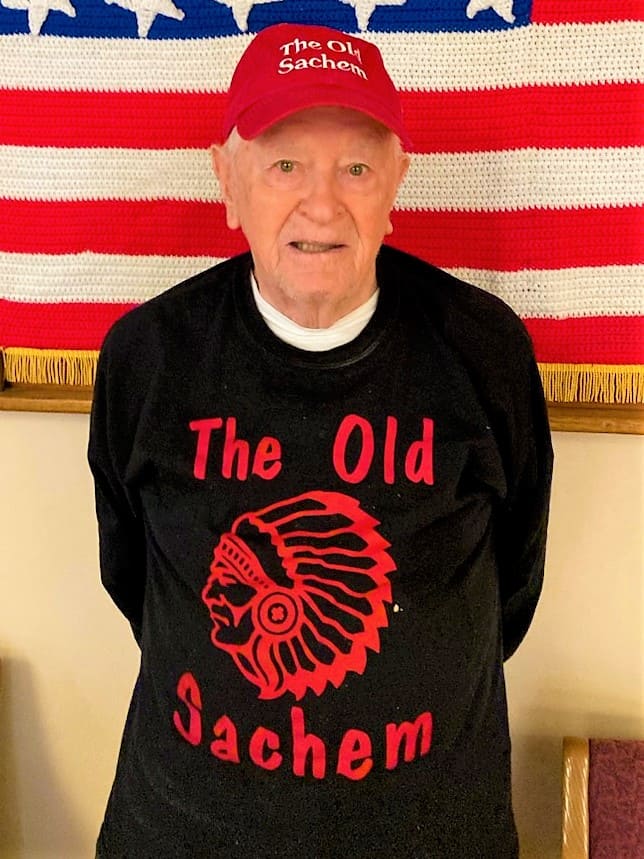If you were around in 1968 and watched the Summer Olympics from Mexico City that year, you saw a treat. A young Dick Fosbury dashed to the bar, then completed a very unusual jump of going over backwards rather than the accepted way of going head first frontways. He changed the method of the high jump forever.
Richard Douglas Fosbury was born on March 6, 1947, in Portland, Oregon. He died on March 12, 2023. He had a remarkable impact on the sport in an action that became to be known as the Fosbury Flop.
At the age of 16 at Medford High School in Portland, he started doing a “back first” jump for the high jump. He began with the traditional method of front first but had trouble getting over the bar. As a sophomore he had trouble completing jumps of five feet, which was the traditional requirement for high school high jumpers. The technique was called the straddle method – where the jumper went over the bar facing down and lifted his legs individually over the bar. The high jump event only has a rule that you start the jump from only one foot and go over the bar. It doesn’t stipulate how you perform after you leap. He decided to try another method, which took him over a year to perfect.
During his junior year he was able to go over the bar backwards, head first, curving his body over the bar and kicking his legs up in the air, ending the jump, and landing on his back. During his time, the landing platform was changed from sawdust to a softer foam rubber. The sawdust hadn’t been a problem for facing jumpers; they landed on their feet. The change to foam rubber fit into Fosbury’s routine very well. He did, however, have early problems, compressing a couple of vertebrae, and the softer landing reduced the problem. Although his coaches kept advocating the straddle method, they eventually could see that Dick could improve from his early method of the flop. During his junior year, he broke the Medford High School record with a jump of 6 feet, 3 inches.
As a senior, he took second place in the state finals with a leap of 6 feet, 5.5 inches. The local newspaper, The Medford Mail-Tribune, posted a photo that was captioned “Fosbury Flops over Bar.” The reporter stated that Fosbury looked like a fish flopping into a boat. Another newspaper reported Fosbury’s effort as “the World’s Laziest High Jumper.”
Fosbury enrolled in Oregon State University after graduating from Medford High. The college coach kept telling Dick that he should use the traditional method and kept Fosbury in that method as a freshman. But as a sophomore he convinced the coach of his flop method, and seeing the results in practice, the coach agreed. As a sophomore he cleared 6 feet, 10 inches in the first college meeting, which shattered the school’s record, and the rest is history.
His method was pictured on the cover of Track & Field in the February 1968 issue. He won the 1968 National Collegiate Athletic Association (NCAA) title using his flop method, and he won again in 1969. He worked on his technique and developed a curved J approach that increased his speed before the jump. He kept having a longer run to increase his speed, which gave him more lift over the bar. He completed a jump of 7 feet, 1 inch at a competition in Berkley, California, and duplicated that feat the following year in the NCAA championship.
Fosbury won the Olympic trials in Los Angeles with a leap of 7 feet, 1 inch, but officials worried that the Mexico City altitude might hinder the athletes. Now the team went into training, and Fosbury was one of four who cleared 7 feet, 1 and 1/8 inches, but was listed as fourth based on misses. In the final team competition, three jumpers were able to clear 7 feet, 2 and 5/8 inches.
In the 1968 Olympics, Fosbury won the Gold Medal with a leap of 7 feet, 4 and 1/4 inches. In the 1972 Olympics in Munich, Germany, 28 of the competitors used the flop and 12 kept to the former method.
He graduated from Oregon U with a degree in civil engineering in 1971. Fosbury was inducted into the National Track & Field Hall of Fame in 1981. He ran as a Democrat for a seat in the Idaho House of Representatives and lost to the incumbent. In January 2019, Fosbury was elected as a Blane County Commissioner. He became a co-owner of Galena Engineering Corporation Inc. In Ketchum, Idaho, where he resided from 1977.
In March 2008 he was diagnosed with stage-one lymphoma, and he had surgery a month later to remove a cancerous tumor that engulfed his lower vertebra, and declared himself to be doing well and cured of cancer.
Fosbury along with fellow Olympians Gary Hall and Anne Cribbs became founders of World Fit, a nonprofit organization that promotes youth fitness programs and Olympic ideals.
Richard Fosbury succumbed with a recurrence of lymphoma at the age of 76. He will be remembered as a champion high jumper who developed a newer, better method of competition.
(Editor’s Note: Bill Stewart, better known to Saugus Advocate readers as “The Old Sachem,” writes a weekly column about sports – and sometimes he opines on current or historical events or famous people)



